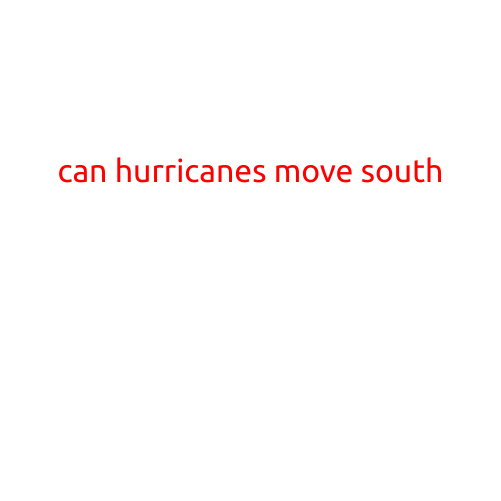
Can Hurricanes Move South?
Hurricanes are powerful tropical cyclones that form over the warm waters of the Atlantic Ocean, Caribbean Sea, and Gulf of Mexico. These storms can bring devastating winds, rains, and flooding to coastal areas, causing widespread destruction and loss of life. One of the most common questions asked during hurricane season is whether hurricanes can move south. The answer is yes, but it’s not as simple as it sounds.
Hurricane Tracks
Hurricanes typically move west-northwestward or northwestward in the Atlantic and northeastward in the Pacific, due to the trade winds and the Coriolis effect. However, it’s not uncommon for hurricanes to make a sharp turn or move southward, especially those that form closer to the equator. In fact, some hurricanes have even made a direct hit on the southern United States.
Why Do Hurricanes Move South?
There are several reasons why hurricanes can move south:
- Persistence: Some hurricanes can persist in their initial track, especially those that form in the Caribbean or eastern Mediterranean.
- Changes in Wind Patterns: Shifts in wind patterns, such as a decrease in northerly winds, can cause a hurricane to move south.
- Interaction with Land: Hurricanes can slow down or change direction when they interact with land, such as in the case of a hurricane making landfall in Florida and then moving southward.
Examples of Hurricanes Moving South
Several notable hurricanes have moved south in recent history:
- Hurricane Wilma (2005): Made landfall in southern Florida and then moved southward, affecting the Bahamas and the Greater Antilles.
- Hurricane Rita (2005): Initially forecast to make landfall in Louisiana, Rita made a sharp turn and moved southward, impacting Texas and Mexico.
- Hurricane Sandy (2012): Although not a traditional hurricane, Sandy made a rare move southward, causing widespread damage and flooding along the eastern seaboard before making landfall in New Jersey.
- Hurricane Dorian (2019): Although it made a devastating hit on the Bahamas and the Carolinas, Dorian’s track shifted southward, sparing much of the Gulf Coast.
Conclusion
In conclusion, while hurricanes tend to move northwestward or northeastward, they can indeed move south due to various factors such as persistence, changes in wind patterns, and interaction with land. It’s essential for residents in hurricane-prone areas to stay informed about the latest updates on hurricane tracks and warnings to ensure their safety.
Remember, hurricanes can be unpredictable, and even seemingly unlikely movements can have devastating consequences. Stay prepared, stay informed, and stay safe during hurricane season.





